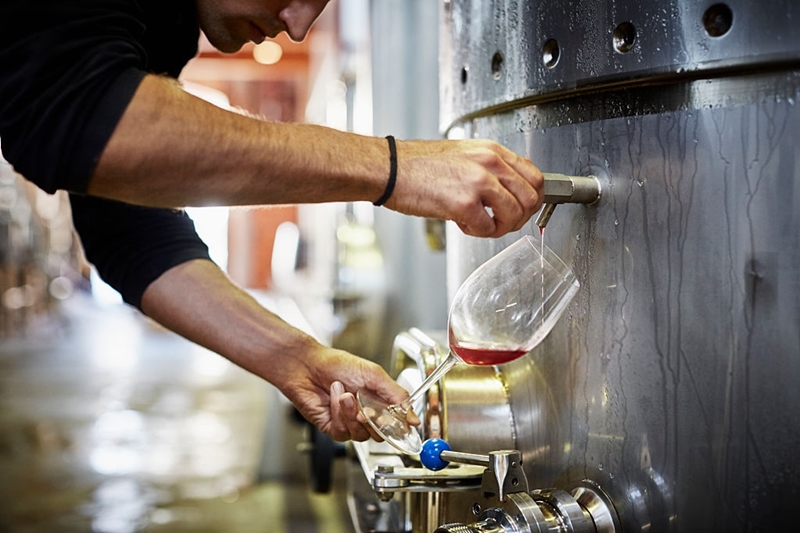Temperature Tweaks: A Cooler Approach to Winemaking
The Yeast's Role in a Green Revolution
2024-08-20

Winemaking, a millennia-old practice, is a complex and delicate craft where science and art converge. At the heart of this process lies the fermentation of grape must, a biochemical marvel where sugars are converted into alcohol, carbon dioxide, and a host of other compounds that define the sensory attributes of wine. Traditionally, winemakers have relied on spontaneous fermentation, driven by wild yeasts naturally present in the vineyard and winery. However, in recent decades, the use of selected starter cultures has become a common practice, allowing vintners to exert greater control over the fermentation process, enhancing wine quality, and ensuring more consistent outcomes.
Yet, the global wine industry is not immune to the growing demand for sustainability. As the world becomes increasingly conscious of environmental impacts, winemakers are exploring new strategies to reduce the ecological footprint of their operations. One emerging approach is the use of specific microorganisms in fermentation to promote more sustainable winemaking practices. Although still in its nascent stages, this method shows promise for minimizing environmental impact without compromising wine quality, though it requires further research and wider adoption.
Historically, sustainability efforts in viticulture have primarily focused on the vineyard, aiming to reduce the use of pesticides, fertilizers, and heavy metals. However, recent research suggests that the environmental impact of winemaking extends beyond the vineyard and into the winery, particularly during fermentation. The microbial transformations that occur during this phase, including alcoholic fermentation driven by yeasts and malolactic fermentation facilitated by bacteria, play a significant role in the overall sustainability of the winemaking process.
One of the major environmental concerns in wineries is the high energy consumption associated with temperature control during fermentation. This issue is particularly pronounced in the production of white and rosé wines, where maintaining a controlled temperature throughout the process is crucial for preserving the delicate flavors and aromas. The need for refrigeration, especially in warmer climates, significantly increases the winery's carbon footprint, leading to a search for more energy-efficient fermentation practices.
Temperature Management and Energy Efficiency in Fermentation
From a microbiological perspective, the effect of temperature on yeast metabolism has been extensively studied. Traditionally, it was believed that only low fermentation temperatures could foster the production of the desirable aromatic compounds in wine. However, recent studies have challenged this assumption, revealing that the impact of temperature on fermentation can vary greatly depending on the yeast strain used and the specific conditions of the must. These findings suggest that it is possible to strike a balance between energy savings and wine quality by carefully adjusting fermentation temperatures.
Research conducted in various wine-producing regions has explored the effects of increasing fermentation temperatures on white wine production. For example, a 2016 study by CREA, in collaboration with the University of Milan, examined the production of base wine for Chardonnay sparkling wine. The researchers found that by increasing the fermentation temperature from 15°C to 19°C, they achieved a 65% reduction in energy consumption without compromising the wine's quality. Similarly, a 2019 study in Germany with Riesling base wine reported a 70% energy savings when the fermentation temperature was raised by 5°C.
These results highlight the potential of optimizing fermentation temperature management to reduce the environmental impact of winemaking, particularly in white wine production. Furthermore, the selection of specific yeast strains can complement this approach, enabling producers to optimize both energy efficiency and the final product's sensory qualities.
The Future of Sustainable Winemaking
As the wine industry continues to evolve, ongoing research is critical in developing new techniques and tools to help winemakers adopt more sustainable practices. The inclusion of sustainability in the priorities of international organizations such as the International Organisation of Vine and Wine (OIV) underscores the importance and global interest in sustainable winemaking. The coming years are likely to see significant advancements in this field, driven by both scientific innovation and the increasing consumer demand for environmentally responsible products.
In conclusion, while the fermentation of grape must remains a cornerstone of winemaking, it also presents an opportunity for the industry to reduce its environmental impact. By refining fermentation practices, particularly through the careful management of temperature and the use of specific microbial cultures, winemakers can produce high-quality wines while moving towards greater sustainability. The journey towards a more sustainable wine industry is ongoing, and with continued research and innovation, it holds the promise of a future where great wine and environmental stewardship go hand in hand.
Founded in 2007, Vinetur® is a registered trademark of VGSC S.L. with a long history in the wine industry.
VGSC, S.L. with VAT number B70255591 is a spanish company legally registered in the Commercial Register of the city of Santiago de Compostela, with registration number: Bulletin 181, Reference 356049 in Volume 13, Page 107, Section 6, Sheet 45028, Entry 2.
Email: [email protected]
Headquarters and offices located in Vilagarcia de Arousa, Spain.